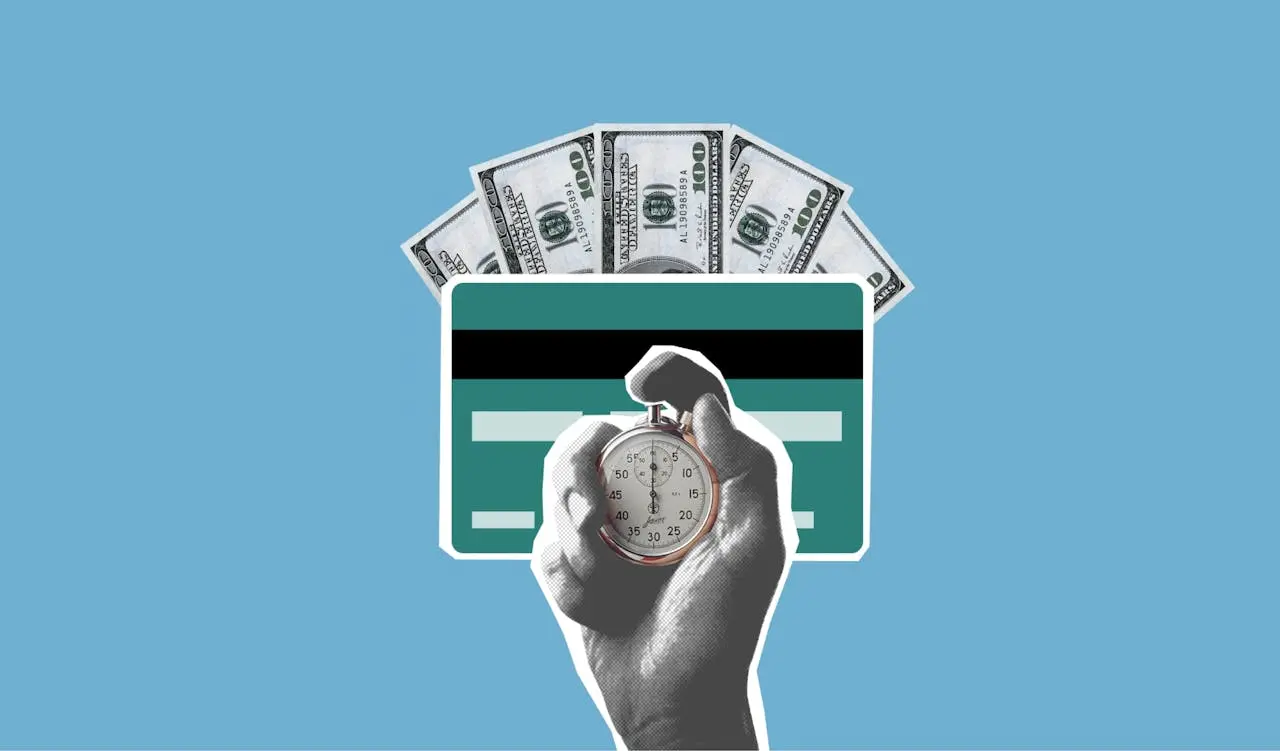
You’re staring at your bank account wondering where all your money went—again. Sound familiar? I’ve been there too, watching my paycheck disappear faster than free pizza at the office. Setting budget goals doesn’t have to feel like punishment though. When I finally mapped out eight realistic financial targets last January, I actually started sleeping better at night. Want to know which goal made the biggest difference in my wallet?
Key Takeaways
- Create a comprehensive monthly budget by tracking all income sources and categorizing expenses into fixed and variable costs.
- Build an emergency fund targeting 3-6 months of essential expenses in a high-yield savings account with automated transfers.
- Pay down high-interest debt by targeting credit cards over 15% APR and allocating at least $500 monthly toward elimination.
- Increase retirement savings by bumping up 401(k) contributions annually and maximizing employer match opportunities.
- Track and reduce unnecessary expenses by analyzing spending patterns and eliminating forgotten subscriptions every six months.
Create a Comprehensive Monthly Budget
Why does creating a budget feel like trying to solve a puzzle with half the pieces missing? You’re determined to take control this year, and you’ll start by tracking every income source – your paycheck, freelance work, rental income, everything.
Next, categorize your expenses into two camps: fixed monthly expenses like rent and car payments, and variable costs like groceries and entertainment. Here’s where you’ll seize power – allocate 10-15% of your income directly to your savings account and investments.
Don’t skip reviewing last year’s spending patterns; they’ll reveal exactly where your money disappeared. Budget For The New year means using apps to monitor every dollar, transforming your fixed expenses from budget killers into manageable, predictable components of your financial success. Remember to distinguish needs from wants when allocating your monthly budget categories, as this conscious spending approach will help you prioritize value over impulse purchases.
Build an Emergency Fund
Once you’ve mapped out your monthly budget, you’ll need to tackle the financial safety net that’ll save you from those curveballs life loves throwing – your emergency fund. This isn’t just saving money for a rainy day – it’s building financial armor that’ll protect your realistic budget from complete destruction.
Building an emergency fund isn’t just rainy day savings – it’s creating financial armor against life’s inevitable curveballs.
- Target 3-6 months of essential expenses – calculate rent, utilities, groceries, and minimum debt payments, then multiply by three to six
- Park it in high-yield savings accounts like Marcus by Goldman Sachs or Ally Bank, earning 3-4% APY instead of your checking account’s measly 0.01%
- Automate monthly transfers to build this fund steadily without thinking about it
Keep this money separate and easily accessible, but not so convenient you’ll blow it on impulse purchases. If you’re looking to boost your emergency fund faster, consider starting a small business that can generate additional income with minimal startup costs.
Pay Down High-Interest Debt

After you’ve built that emergency fund fortress, it’s time to tackle the financial vampire that’s been sucking your wallet dry – high-interest debt. Credit card debt with interest rates over 15% should be your first target. Create a plan by listing all your balances and attacking the highest rates first – it’s like playing financial whack-a-mole, but with actual results.
Consider consolidating with a 0% introductory APR balance transfer card to buy yourself breathing room. Allocate at least $500 monthly toward these debts to eliminate them within 12-18 months. Don’t be shy about calling your credit card companies to negotiate lower rates – they’d rather keep you as a customer than lose you entirely. Meanwhile, resist the temptation to rack up new debt.
To accelerate your debt payoff timeline, consider starting a home-based business like freelance writing or virtual assistant work to generate additional income streams.
Increase Retirement Savings Contributions
With those debt payments shrinking your monthly obligations, you’ve got a golden opportunity to redirect that money toward your future self – and trust me, Future You’ll thank Present You with interest.
Your debt-free dollars are begging for a new job – and retirement savings is hiring with excellent long-term benefits.
Now’s the perfect time to supercharge those retirement accounts and turn your financial goals into reality. Here’s your plan to pay yourself first:
- Bump up your 401(k) by 1-2% annually – you won’t even notice the difference, but your balance sure will
- Max out that employer match – it’s literally free money sitting on the table
- Open a Roth IRA and contribute $6,000 if you’re eligible for tax-free retirement income
Start with contributing 10-15% of your pre-tax income to retirement savings. Remember that compound interest works best when you give it time, making consistent contributions over decades the real path to building wealth. Your future self is counting on you to make these moves happen.
Track and Reduce Unnecessary Expenses
You can’t fix what you don’t track, so start by examining where your money actually goes each month instead of where you think it goes. I discovered I was spending $47 monthly on subscriptions I’d forgotten about, including that meditation app I used exactly twice in January.
Once you identify these spending patterns over 2-3 months, you’ll spot the sneaky expenses that drain your budget without adding real value to your life. Consider using a digital brain tool to systematically track everything from recurring subscriptions to daily coffee purchases, creating a comprehensive view of your spending habits.
Identify Spending Patterns
Before I could tackle my spending habits, I’d to face the uncomfortable truth about where my money actually went each month. You’ll need to do the same detective work, and trust me, it’s eye-opening. I discovered I was spending $47 monthly on subscriptions I’d forgotten about – ouch.
Here’s how you can identify your spending patterns:
- Categorize your fixed expenses like rent, insurance, and utilities first
- Track variable monthly costs including groceries, entertainment, and those sneaky coffee runs
- Analyze where most money is going by reviewing three months of bank statements
Once you know how much you’re actually spending in each category, you’ll have the power to make informed decisions. Those small daily purchases really add up, and knowledge gives you control over your financial future.
Eliminate Wasteful Subscriptions
After discovering those forgotten subscriptions in my own spending audit, I knew I’d to dig deeper into this money-draining rabbit hole. The average household wastes $350 yearly on unused services—that’s real money you could control instead.
Start by scrutinizing your credit cards and bank statements for recurring charges. You’ll likely find streaming services you’ve forgotten, apps you tried once, or gym memberships gathering digital dust. Make sure you recognize every single monthly expense.
Apps like Rocket Money can automatically hunt down these sneaky charges and cancel them for you. Even cutting $10 monthly saves $120 annually—money you can redirect toward your actual goals.
Set reminders to audit subscriptions every six months. Your future self will thank you for taking command of these expenses.
Establish Clear Financial Goals

When I first decided to get serious about my money, I made the classic mistake of setting vague goals like “save more” and “spend less” – which, surprise surprise, got me absolutely nowhere.
You need fixed, concrete targets that’ll help you stay accountable and actually move the needle. Here’s how to take advantage of SMART goal-setting:
- Make it specific and measurable – Instead of “save money,” commit to “save $3,000 for emergencies by December 31st”
- Set both short and long-term targets – Emergency fund first, then retirement contributions at 15% of your income
- Prioritize ruthlessly – Attack one goal at a time rather than spreading yourself thin
Consider breaking your annual financial goals into 12-week cycles to maintain focus and create more frequent opportunities to review and adjust your progress. This focused approach will help make your financial dreams reality, not just wishful thinking.
Automate Your Savings
Setting clear financial goals is only half the battle – the real magic happens once you remove yourself from the equation entirely. You’ll want to automate everything possible, starting with transferring money aside to a high-yield savings account right after payday.
Set up automatic 401(k) contributions and increase them yearly, because let’s face it, you won’t recall otherwise. Automate your rent or mortgage payments to avoid late fees that’ll derail your budget.
Create sinking funds for car repairs and vacations – trust me, your future self will appreciate your efforts. Use apps like Mint to categorize expenses automatically, helping you stay focused on what matters. Don’t rely on Social Security alone; automation builds your safety net effortlessly.
Use accounting software to track your income and expenses throughout the year, giving you a clear picture of your financial health and helping you make informed decisions about your automated savings goals.
Review and Optimize Your Insurance Coverage

Your insurance coverage probably hasn’t changed much since you first signed up, but your life definitely has, and those old policies might be leaving you dangerously exposed or costing you way too much. Take thirty minutes this month to pull out all your insurance documents and honestly assess where you’ve got gaps in coverage, like that measly $25,000 life insurance policy from work that wouldn’t even cover your mortgage.
Then grab quotes from at least three different companies to compare costs, because I saved $400 last year just by switching my auto insurance to a company that offered the exact same coverage for less. If you’re planning to start a business this year, now’s also the time to incorporate business insurance considerations into your comprehensive planning process.
Assess Current Policy Gaps
How often do you actually read through your insurance policies instead of just paying the bills and hoping for the best? Most of us treat insurance like those new year’s resolutions we make—good intentions that get forgotten by February. But here’s the thing: your coverage needs are subject to change as life evolves.
Time to become the insurance detective your family member never knew they needed:
- Compare your health plan against actual medical expenses from last year—you might discover you’re overpaying for coverage you don’t use
- Calculate if your life insurance actually covers your debts plus five years of income for dependents
- Check if your disability coverage matches your short- and long-term financial obligations
Take control and close those gaps now.
Compare Coverage Costs
While you’ve been dutifully auto-paying those insurance premiums like clockwork, you might be throwing away hundreds—or even thousands—of dollars each year. Time to channel that inner negotiator and shop around like your mortgage payments depend on it.
Start by gathering quotes from at least three insurers for identical coverage. I saved $1,200 annually just by switching car insurance—that’s two extra mortgage payments! Don’t forget to ask about multi-policy discounts when bundling home, auto, and life insurance policies. Many companies offer 15-25% savings for multiple policies.
Consider raising your deductible from $500 to $1,000 to slash those cost-effective premiums by 20-30%. Just make sure you’ve got enough emergency cash to cover that higher out-of-pocket expense.
Conclusion
You’ve got this! Setting these eight budget goals might feel overwhelming at first, but recall, you don’t need to tackle everything overnight. Start with one or two goals that excite you most—maybe that emergency fund or finally canceling those sneaky subscriptions. Small, consistent steps beat perfection every time. Your future self will appreciate you when you’re sleeping soundly, knowing your finances are finally working for you instead of against you.





Leave a Reply